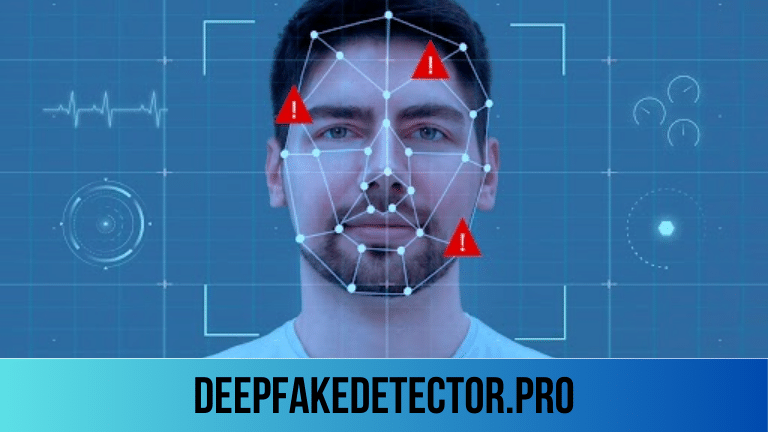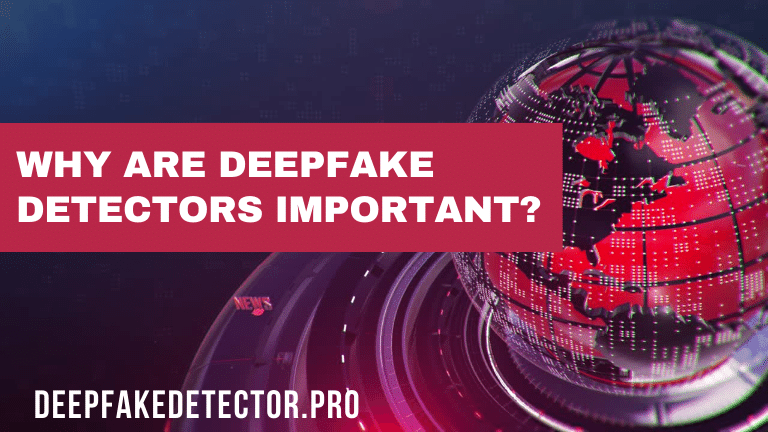Why are DeepFake detectors important? One such challenge is the proliferation of deepfakes – highly realistic synthetic media created using deep learning techniques to manipulate or generate audio, video, or images. Deepfakes have the potential to spread misinformation, undermine trust in digital content, and even threaten individual privacy and security. As a result, the development of effective deepfake detectors has become a critical necessity in today’s digital age.
Understanding Deepfakes and Their Impact
Before delving into the importance of deepfake detectors, it’s crucial to understand what deepfakes are and the potential risks they pose.
What are Deepfakes?
Deepfakes are a form of synthetic media created by leveraging deep learning algorithms and techniques such as generative adversarial networks (GANs) and autoencoder architectures. These algorithms are trained on vast datasets of images, videos, or audio recordings to learn and replicate the intricate patterns and features of the target subject.
With deepfakes, it’s possible to seamlessly superimpose an individual’s face, voice, or gestures onto existing media, creating highly convincing and realistic fabrications. The sophistication of deepfake technology has advanced rapidly, making it increasingly difficult to distinguish between genuine and synthetic content.
Potential Risks and Consequences
The proliferation of deepfakes poses significant risks and potential consequences across various domains, including:
- Misinformation and Disinformation: Deepfakes can be used to create and spread false narratives, manipulate public opinion, and undermine trust in legitimate sources of information, posing a threat to democratic processes and societal stability.
- Identity Theft and Fraud: By impersonating individuals in audio or video recordings, deepfakes can facilitate identity theft, financial fraud, and other malicious activities, compromising personal and financial security.
- Revenge Porn and Exploitation: The non-consensual creation and dissemination of explicit deepfake content can lead to the exploitation and harassment of individuals, causing significant emotional distress and reputational damage.
- Political and Social Manipulation: Deepfakes can be weaponized to discredit public figures, sway political opinions, or incite social unrest by spreading misleading or fabricated content.
- Erosion of Trust: The widespread distribution of deepfakes can erode public trust in digital media, undermining the credibility of legitimate sources and fostering an environment of skepticism and uncertainty.
As deepfake technology continues to advance and become more accessible, the potential risks and consequences amplify, highlighting the critical need for effective detection and mitigation strategies.
The Importance of Deepfake Detectors
Deepfake detectors are computational tools and algorithms designed to identify and distinguish synthetic media from authentic content. These detectors play a crucial role in mitigating the risks associated with deepfakes and safeguarding the integrity of digital information.
Preserving Trust in Digital Media
In an era where digital media is pervasive and plays a vital role in shaping public discourse and decision-making, it’s essential to maintain trust in the authenticity of the information we consume. Deepfake detectors help preserve this trust by providing a means to verify the legitimacy of digital content, ensuring that we can rely on the information we receive and make informed decisions based on accurate data.
Combating Misinformation and Disinformation
Deepfakes have the potential to be weaponized for the spread of misinformation and disinformation campaigns, which can have far-reaching consequences for individuals, organizations, and societies. Effective deepfake detectors serve as a powerful tool in combating these threats, enabling the timely identification and mitigation of synthetic media before it can cause significant harm.
Protecting Individual Privacy and Security
The non-consensual creation and dissemination of deepfake content, particularly in the form of explicit or compromising media, can severely violate individual privacy and personal security. Deepfake detectors can help identify and remove such content, protecting individuals from exploitation, harassment, and reputational damage.
Safeguarding Democratic Processes and Public Trust
In the political sphere, deepfakes pose a significant threat to democratic processes and public trust. By enabling the detection and removal of fabricated or manipulated media, deepfake detectors can help safeguard the integrity of elections, political discourse, and public decision-making processes, ensuring that citizens have access to accurate and reliable information.
Facilitating Accountability and Legal Recourse
The ability to reliably detect deepfakes is crucial for facilitating accountability and pursuing legal recourse against those who create or distribute synthetic media for malicious purposes. Deepfake detectors can provide valuable evidence and support in investigations and legal proceedings, helping to hold perpetrators accountable for their actions.
Challenges in Deepfake Detection
While the importance of deepfake detectors is evident, developing effective and reliable detection methods is a complex challenge due to the rapid advancement of deepfake technology and the unique characteristics of synthetic media.
Technological Arms Race
The ongoing technological arms race between deepfake creators and detection algorithms presents a significant hurdle. As deepfake techniques evolve and become more sophisticated, detection methods must continuously adapt and improve to keep pace with the advancements in synthetic media generation.
Generalization and Robustness
Deepfake detectors must be capable of generalizing across a wide range of media types, subjects, and generation techniques. Developing robust algorithms that can accurately detect deepfakes in diverse scenarios, while minimizing false positives and false negatives, remains a formidable challenge.
Computational Complexity and Scalability
The computational demands of analyzing and processing large volumes of multimedia data can be substantial, especially when dealing with high-resolution video or audio content. Ensuring that deepfake detectors are efficient, scalable, and capable of operating in real-time or near real-time is crucial for practical deployment and widespread adoption.
Data Availability and Privacy Concerns
Training effective deepfake detectors often requires access to large datasets of both authentic and synthetic media. However, acquiring and curating such datasets can be challenging due to privacy concerns, data availability limitations, and the potential for biases or imbalances in the data.
Adversarial Attacks and Resilience
As deepfake detection methods become more widely known and adopted, there is a risk of adversarial attacks specifically designed to bypass or fool these detection algorithms. Developing resilient detection strategies that can withstand adversarial attacks and maintain robustness is an ongoing area of research and development.
Despite these challenges, the continued advancement of deepfake detection techniques is crucial for mitigating the risks posed by synthetic media and ensuring the integrity of digital information.
Approaches to Deepfake Detection
Researchers and developers have explored various approaches to deepfake detection, each with its strengths and limitations. Here are some of the most promising techniques:
Traditional Media Forensics
Traditional media forensics techniques, such as pixel-level analysis, compression artifact analysis, and metadata examination, can be applied to detect inconsistencies or anomalies in synthetic media. While these methods may be effective for certain types of deepfakes, they can be limited in their ability to detect more sophisticated and high-quality synthetic content.
Deep Learning-based Detection
Deep learning algorithms, particularly convolutional neural networks (CNNs) and recurrent neural networks (RNNs), have shown promising results in detecting deepfakes. These models are trained on large datasets of authentic and synthetic media, learning to identify subtle patterns and artifacts that distinguish deepfakes from genuine content.
Biological Signal Analysis
Biological signal analysis techniques, such as analyzing eye movements, blinking patterns, or facial muscle dynamics, can be used to detect inconsistencies in synthetic media that may not be apparent to the human eye. This approach leverages the intricate complexities of human physiology and behavior, which can be challenging to replicate perfectly in deepfakes.
Provenance and Blockchain-based Approaches
Provenance and blockchain-based approaches aim to establish a tamper-proof record of the origin and authenticity of digital media. By leveraging decentralized and immutable ledgers, these techniques can provide a means to verify the integrity of digital content and detect potential manipulations or synthetic elements.
Hybrid and Ensemble Methods
To improve accuracy and robustness, researchers often combine multiple approaches into hybrid or ensemble methods. By fusing different detection techniques, such as deep learning, biological signal analysis, and traditional forensics, these methods can leverage the strengths of each approach and compensate for individual weaknesses.
As deepfake technology continues to evolve, it is likely that novel detection techniques will emerge, and existing methods will be refined and improved. Ongoing research and collaboration among academia, industry, and government agencies will be crucial in staying ahead of the deepfake threat.

FAQs
1. What are DeepFake detectors?
DeepFake detectors are tools or technologies designed to identify and flag manipulated media, specifically videos and images, that have been altered using artificial intelligence to create realistic but fake representations of people or events.
2. Why is it crucial to have DeepFake detectors in today’s digital age?
In today’s digital age, the proliferation of fake news and misinformation can have significant consequences, from influencing public opinion and elections to damaging reputations and inciting violence. DeepFake detectors help mitigate these risks by identifying and exposing manipulated content, thereby preserving the integrity of information.
3. How do DeepFake detectors benefit individuals and society?
DeepFake detectors protect individuals from identity theft and defamation by detecting and preventing the spread of falsified media. For society, they maintain trust in digital content, ensuring that information consumed by the public is accurate and reliable, which is essential for informed decision-making and democratic processes.
4. What industries benefit the most from DeepFake detectors?
Various industries benefit from DeepFake detectors, including journalism, law enforcement, social media platforms, and the entertainment industry. These detectors help ensure the authenticity of news reports, assist in criminal investigations, prevent the spread of harmful content on social media, and maintain the integrity of digital media and entertainment.

